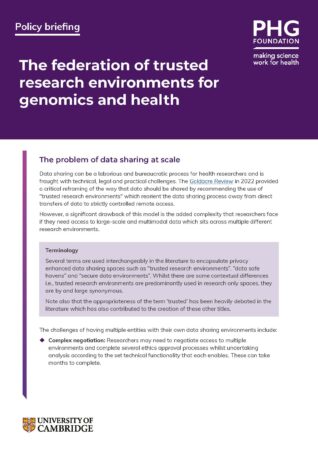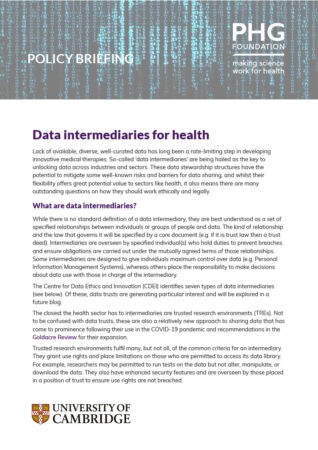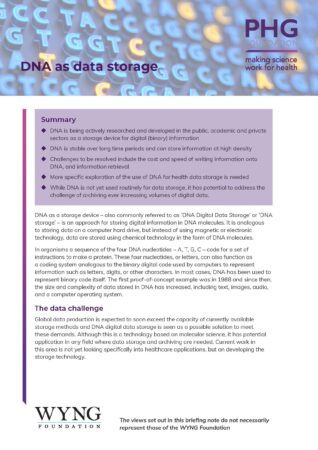Understanding the evolving landscape of data regulation for health research
These resources make recommendations for achieving good data governance and trustworthy systems of data storage and sharing. They set out for researchers – or anyone needing up to date overviews – the changes taking place in the evolving regulatory landscape of personal data in health research.
Importantly, they include our rigorous analysis of the challenges researchers and policy makers face in ensuring the responsible use of data from different sources.
In our most recent briefing we explain the role and strucuture of federated trusted research environments which may offer a way to future proofing genomic and health data sharing.
The federation of trusted research environments for genomics and health
The problem of data sharing at scale Data sharing can be a laborious and bureaucratic process for health researchers and is fraught with technical, legal and practical challenges. The Goldacre Review in 2022 provided a critical reframing of the way that data should be shared by recommending the use of “trusted research environments” which reorient the data sharing process away from direct transfers of data to strictly controlled remote access.
A significant drawback of this model is the added complexity that researchers face if they need access to large-scale and multimodal data which sits across multiple different research environments.
Read: The federation of trusted research environments for genomics and health
More on data for better population health
So-called ‘data intermediaries’ are being hailed as the key to unlocking data across industries and sectors. These data stewardship structures have the potential to mitigate some well-known risks and barriers for data sharing, and whilst their flexibility offers great potential value to sectors like health, it also means there are many outstanding questions on how they should work ethically and legally.
DNA storage is analagous to storing data on a computer hard drive, but instead of using magnetic or electronic technology, data are stored using chemical technology in the form of DNA molecules. This policy briefing considers the potential of this method to address thechallenge of archiving ever increasing volumes of digital data.



